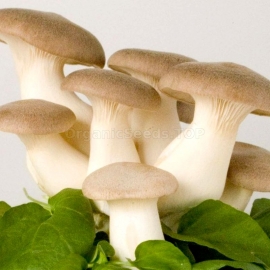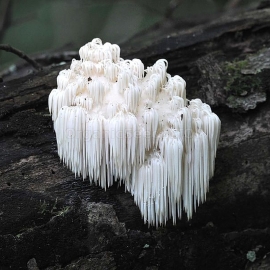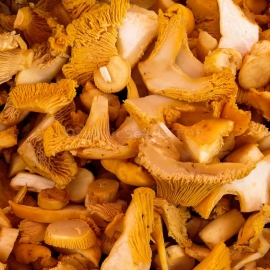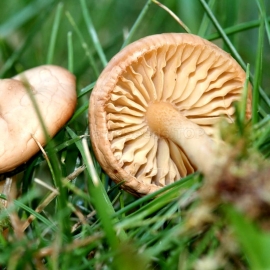 EXCLUSIVE
EXCLUSIVE
«Japanese honey agaric» (Pholiota nameko) - Organic Mushroom Spawn
6.10 €
Japanese honey mushroom is one of the most revered mushrooms in Japanese cuisine, Japanese mushroom contains vitamins D and B2, a lot of fiber, as well as natural antibiotics that help fight staphylococcal infections and eliminate inflammation.
-
Organic Mushroom Spawn «Japanese honey agaric» (Pholiota nameko)
Japanese Opinok is one of the most popular mushrooms in Japanese cuisine. Japanese opinok in Asia is cultivated on the same scale as winter opinok and shiitake. Glutinous mushroom growth on the old tree or on the stumps of broad-leaved trees - beech or oak, the most active growth in the minds of increased moisture.
Mushroom got its name "slippery mushroom" for the characteristic sticky film covering fresh mushrooms. A rather unpleasant film can be easily removed during washing and further heat treatment. The mucus that coats the mushrooms makes them unsuitable for long-term fresh storage, but canned, pickled, frozen, or salted mushrooms keep for a very long time.
Useful properties
Japanese mushroom contains vitamins D and B2, a lot of fiber, as well as natural antibiotics that help in the fight against staphylococcal infection, effectively eliminating inflammatory processes in the body.
Taste and uses
Slippery mushroom has a delicate texture and a very unusual mushroom taste, for which it is highly valued in Asian cuisine.Various salads, miso soup, stews, snacks, broths are prepared from Japanese mushrooms . Nameko is very tasty when fried, as its sweetish taste is complemented by a crunchy texture. It is important to note that after heat treatment, Japanese honey agaric retains most of its medicinal properties.
Productivity
Slippery mushroom can be found in stores called "honey mushroom", but it is cheaper to grow mushrooms on your own, especially since it is not difficult - it is important to consider that this mushroom loves hard wood. The slippery mushroom is cultivated both outdoors and indoors, at a temperature of 10-27 degrees. The most favorable time for planting mushrooms in a woody substrate is April-May or August, indoors throughout the year.
As a substrate, you can use stale, damp hardwood logs (hornbeam, beech, alder, aspen, maple, birch, willow, chestnut, poplar, oak), without signs of rot and branches, with bark. The diameter of the logs is 20-50 centimeters, the length is from 30 to 50 cm. If the logs are dry, they must be soaked and then placed in a warm room with good ventilation. For laying sticks with mycelium, holes are drilled in the logs about 4 centimeters long and 0.8 centimeters in diameter. Mushroom sticks are inserted into the holes until they stop, always with sterile gloves, after which the logs are wrapped with a film, leaving small holes for ventilation.
When grown on soft wood, the first harvest can be expected after 5 months, on hardwood - after 9 months. In good conditions, the mushroom will bear fruit in waves, in spring and autumn. The duration of the fruiting period is approximately 3-7 years, on stumps up to 10 years, and depends on the density of the wood. The yield ranges from 15-30% of the mass of the substrate. Everyone can appreciate this tasty and healthy mushroom, because growing it at home is not difficult at all.
Other names: sticky mushroom, slippery mushroom, nameko mushroom, oily mushroom
With this product buy
6.10 €
Pleurotus Eryngii originated from the shores of Mediterranean Sea. It is therefore found in the Middle East and areas in the northern part of Africa. Other names used to refer to this mushroom include French Horn and King Trumpet Royale.
6.10 €
Lion’s Mane is a beautiful and unusual ‘teethed’ mushroom comprised of layers of soft cascading spines. It gets its name from the Lion’s Mane Jellyfish not from the big cat! Lion’s Mane is now a rare find in the wild.
6.10 €
On the lower surface, underneath the smooth cap, most species have gill-like ridges that run almost all the way down its stipe, which tapers down seamlessly from the cap. Many species emit a fruity aroma, reminiscent of apricots.
6.10 €
This petite mushroom is a nuisance to lawn owners: its mycelium browns the grass in arcs and rings. But it redeems itself by being a fine food. A homeowner can fight back by eating the mushrooms as they periodically appear.




